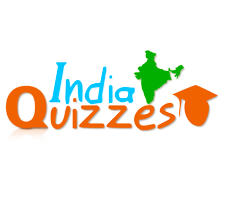Question: The remains of the Vijayanagar empire can be found in –
1. Bijapur
2. Golconda
3. Hampi
4. Boroda
Answer: 3
Question: Which one of the following observations is not true about the Quit India Movement of 1942?
1. It was a non-violent movement
2. It was led by Mahatma Gandhi
3. It was a spontaneous movement
4. It did not attract the labour class in general
Answer: 1
Question: Multi-purpose river valley projects are the “New temples of modern India”. The above statement is made by:
1. Jawaharlal Nehru
2. Motilal Nehru
3. Mahatma Nehru
4. Rajiv Gandhi
Answer: 1
Question: From which of the following banks did Madan Malaviya take loans for financing “The Hindustan Times”?
1. State Bank of India
2. Punjab National Bank
3. Bank of Maharashtra
4. Bank of Baroda
Answer: 2
Question: What is the first sermon of Buddha called as?
1. Mahaparinirvansutta
2. Brahmajalasutta
3. Dhammachakkapabattanasutta
4. Kachchayanagottasutta
Answer: 3
Question: Who described the Government of India Act, 1935 as a new charter of bondage?
1. B.R. Ambedkar
2. Mahatma Gandhi
3. Rajendra Prasad
4. Pt. Jawaharlal Nehru
Answer: 4
Question: Who gave the title of “Mahamana” to Madan Mohan Malaviya?
1. Bal Gangadhar Tilak
2. Dada Bhai Nauroji
3. Gopal Krishna Gokhale
4. Mahatma Gandhi
Answer: 4
Question: Who was the other Congress leader who joined with Motilal Nehru to start the Swaraj party in 1923?
1. G.K. Gokhale
2. B.G. Tilak
3. Chittaranjan Das
4. M.K. Gandhi
Answer: 3
Question: Who was the Viceroy at the time of Quit India Movement?
1. Lord Irwin
2. Lord Mountbatten
3. Lord Wavell
4. Lord Linlithgow
Answer: 4
Question: Abdur Rahim Khan-i-Khana was a
1. Diplomat of high calibre of King of Persia
2. Wise counsellor of Aurangzeb
3. Great military leader of Shivaji
4. Versatile genius and writer in Hindi, Persian and Arabic in the reign of Akbar
Answer: 4
Question: The most accomplished writer in Persian of Akbar’s reign–a man of letters, a poet, an essayist, a critic, and a historian–was
1. Abul Fazl
2. Badauni
3. Faizi
4. None of these
Answer: 1
Question: Which of the following battles marked the real beginning of the Mughal Empire in India?
1. Battle of Talikota
2. Battle of Haldighati
3. First Battle of Panipat
4. Second Battle of Panipat
Answer: 4
Question: Which of the following religions influenced Akbar much more than any single religion, all of which were meticulously examined by him?
1. Christianity
2. Jainism
3. Hinduism
4. Zoroastrianism
Answer: 3
Question: The Third Battle of Panipat was fought between the
1. Afghans and the Marathas
2. Afghans and the Sikhs
3. Marathas and the Mughals under Shah Alam II
4. None of the above
Answer: 1
Question: Who was the last Mughal Emperor of India?
1. Akbar II
2. Bahadur Shah II
3. Alamgir II
4. Shah Alam II
Answer: 2
Question: Which of the following was the official court language during Akbar’s reign?
1. Arabic
2. Persian
3. Urdu
4. Turki
Answer: 2
Question: Who among the following, was incharge of land revenue system during the reign of Akbar?
1. Abul Fazl
2. Birbal
3. Man Singh
4. Todar Mal
Answer: 4
Question: Who among the following Muslim rulers was venerated by Muslims as a Zinda Pir or living saint?
1. Tughlaq Shah I
2. Jalaluddin Akbar
3. Haji Shamsuddin Ilyas
4. Muih-ud-din Muhammad Aurangzeb
Answer: 4
Question: Who built the tomb of Itimad-ud-daula at Agra?
1. Akbar
2. Jahangir
3. Nur Jahan
4. Sher Shah
Answer: 3
Question: Who among the following was the accredited Ambassador of the King of England, James I, to the Mughal Emperor Jahangir court?
1. James Lancaster
2. Sir Henry middleton
3. Sir Thomas Roe
4. None of these
Answer: 3

Select Page


